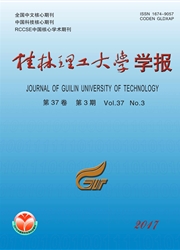

 中文摘要:
中文摘要:
牛塘界钨矿产于桂北越城岭加里东期花岗岩体西南外接触带,矿体呈层状、似层状或透镜状赋存于寒武系清溪组第二段中。矿石类型以矽卡岩型为主,次为石英脉型和花岗岩型,矿石品位以石英脉型较高(w(WO_3)〉8%);矿石以交代结构和稀疏浸染状构造为主,矿石矿物有白钨矿、黄铁矿、方铅矿、闪锌矿等。矿石主要矿物形成阶段为区域变质和热变质阶段、矽卡岩阶段、氧化物阶段、石英硫化物阶段及碳酸盐阶段。电子探针显微分析表明:白钨矿的主要组分WO_3、Ca O含量分别为75.29%~80.04%、18.91%~19.49%;Mo、Cu含量与南岭及邻区白钨矿相比偏低(Mo O_3含量低于检测限,Cu O 0~0.03%),因此本矿床的白钨矿纯度更高。研究认为,牛塘界钨矿成矿物质与花岗岩关系最为密切,矿石铅同位素显示,方铅矿模式年龄为516~608 Ma,成矿物质可能来源于上地壳,矿区矽卡岩为热液蚀变作用的产物,矿石中含有大量热液石英,且白钨矿常与石英、萤石伴生,推测钨的搬运形式为含F-、Cl-等阴离子的络合物。
 英文摘要:
英文摘要:
The Niutangjie tungsten deposit is located in the southwestern outer contact zone of the Yuechengling Caledonian granitic pluton in northern Guangxi,China. Orebodies are layered or lenticular in shape and hosted by the Second Member of the Cambrian Qingxi Group. Ore types are mainly of skarn type with minor quartz-vein and granite types. The higher ore grade is seen in quartz-vein type( w( WO_3) 8%). The ores show metasomatized alteration texture and are sparsely disseminated. The orebodies are composed of scheelite,pyrite,galena,and sphalerite. The deposit has experienced regional and thermal metamorphic stage,skarn stage,oxides stage,quartz sulfide stage,and carbonate stage. According to the micro-probe analysis results,concentrations of WO_3 and Ca O are 75. 29%- 80. 04% and 18. 91%- 19. 49% respectively in scheelite. Compared to scheelite reported from Nanling and adjacent areas,the scheelite in Niutangjie deposit has higher purity due to its lower concentrations of Mo and Cu( The concentrations of Mo O_3 are lower than detection limit and the concentrations of Cu O are 0- 0. 03%). Based on data obtained in this study,the source of ore-forming material is closely related to the granite and may be derived from the upper crust. The lead isotopic data show galena model ages of 516- 608 Ma. The skarn is the product of hydrothermal metasomatic alteration between the granite and its wall rocks. The ore contains a large volume of hydrothermal quartz. The scheelite is associated with quartz and fluorite,suggesting that the tungsten was likely transported in a media with F-and Cl-complexes.
 同期刊论文项目
同期刊论文项目
 同项目期刊论文
同项目期刊论文
 期刊信息
期刊信息
